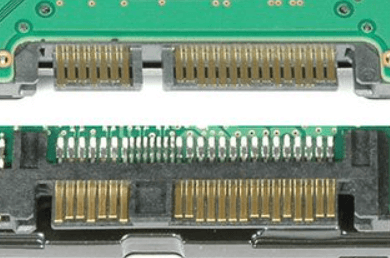Yes, you can run SATA drives through a SAS controller due to excellent SATA-SAS compatibility engineered into modern systems. SAS controllers feature universal ports that recognize and communicate with both drive types automatically. This compatibility gives IT managers flexibility to mix lower-cost SATA storage with enterprise-grade SAS drives in the same infrastructure. While SATA drives operate at slower speeds than native SAS drives, the SATA-SAS compatibility allows organizations to create tiered storage solutions that balance performance and budget constraints effectively.
1. Shared Compatibility
Serial Attached SCSI (SAS) controllers are designed with backward compatibility to work with Serial ATA (SATA) drives. Both SAS and SATA drives use a similar electrical interface, allowing SAS controllers to recognize and operate SATA drives. This compatibility offers flexibility, especially in environments where a mix of both SAS and SATA storage is required.
2. Dual-Port vs. Single-Port
While SAS drives are typically dual-ported for higher redundancy and performance, SATA drives are single-ported. When you connect a SATA drive to a SAS controller, the controller operates the SATA drive, but the SATA drive retains its single-port functionality. This means you’ll lose the redundancy features that are unique to SAS, but you still benefit from using a single management interface for both types of drives.
3. Performance Considerations
SAS drives generally have higher performance in terms of speed and durability compared to SATA drives. However, when you run a SATA drive through a SAS controller, the speed will be capped at the maximum bandwidth that SATA supports, which is lower than what a SAS controller is capable of. For example, SATA III supports up to 6Gbps, whereas SAS can handle up to 12Gbps in its latest iterations. This makes running SATA through SAS an efficient solution for scenarios where high storage capacity is prioritized over extreme performance.
4. Use Cases
Running SATA drives through SAS controllers is especially useful in enterprise or data center environments. In these scenarios, the cost-efficiency of SATA combined with the scalability of SAS infrastructure allows administrators to build tiered storage systems. High-performance SAS drives can be used for critical data, while high-capacity SATA drives are ideal for archiving and backup purposes.
5. Limitations
It’s important to note that the reverse is not true—you cannot run a SAS drive through a SATA controller. This is because SAS drives require certain signaling and features that are not supported by SATA controllers. Hence, SAS controllers are more versatile as they can handle both SAS and SATA, whereas SATA controllers can only handle SATA drives.
6. Future-Proofing
If you’re building a system with long-term scalability in mind, using a SAS controller for a mixed array of SAS and SATA drives offers flexibility. As your data storage needs grow, you can swap out SATA drives for faster or more robust SAS drives without needing to replace the entire controller infrastructure.
Yes, you can run a SATA drive through a SAS controller. This setup offers a cost-effective, flexible, and scalable solution, particularly for enterprise environments that need to balance performance, storage capacity, and budget. The only significant limitation is that you won’t benefit from the enhanced features of SAS when using a SATA drive. However, this trade-off may be worthwhile in systems where high storage volume or a variety of drive types is necessary.
By understanding the distinctions between SAS and SATA, you can leverage the advantages of each to build a robust and versatile storage system.
| Read More Topics |
| What programming language is LeetCode? |
| How can you protect your home computer cyber security? |
| 10 Important skills for Back-End developer |






